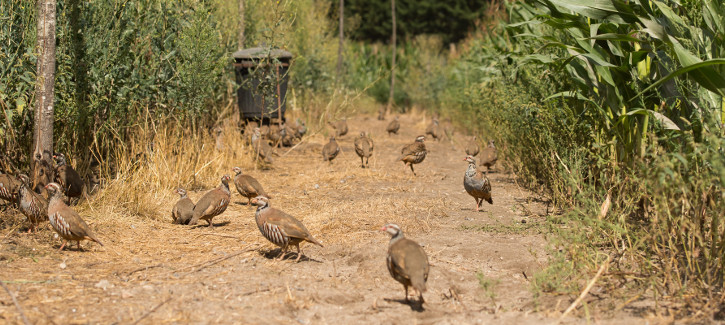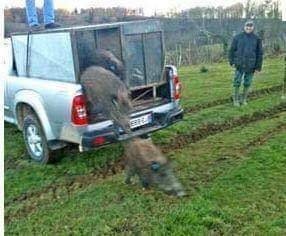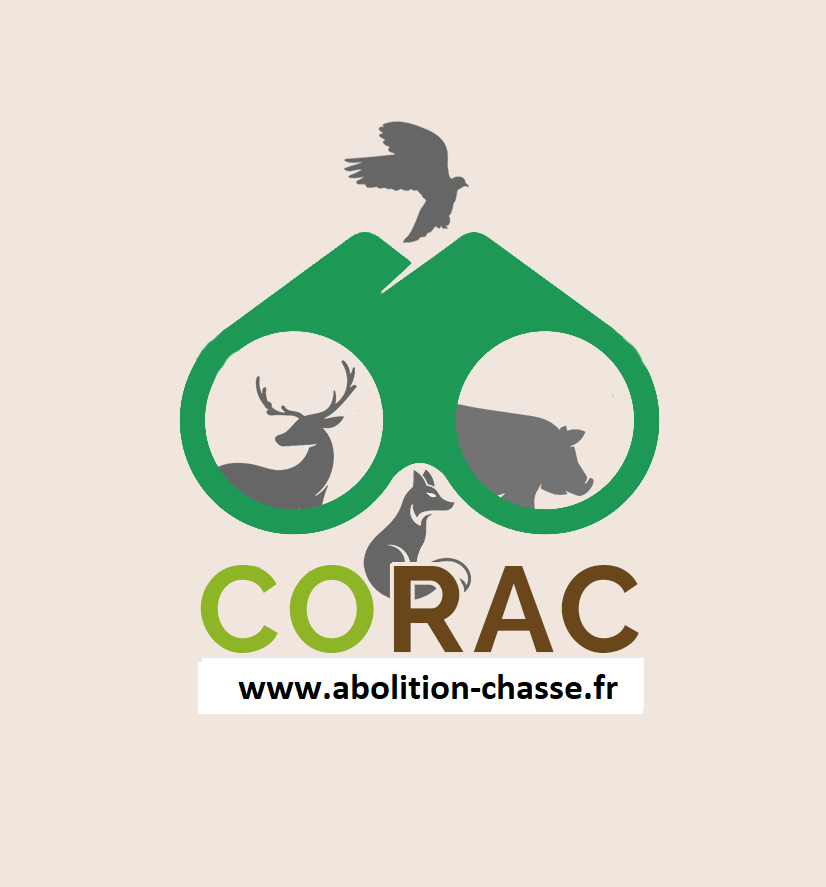« Game » Releases
When taking a walk in the French countryside, it is not a rare occurrence to come across a pheasant or a hare, who does not run away from humans and even lets them approach in the hopes of getting food. This is the reaction of a domesticated animal, an animal raised by humans and released in nature to be killed during a hunt. It often happens that these animals, who will not flee when a hunter comes to kill them, will be killed the morning of their release during a « hunting party ». Without « game » releases, there would not be enough preys left for hunters, and without preys, no hunters.
Millions of animals are raised and released to be used as targets by individuals claiming that they regulate and protect wildlife.

The Corresponding Numbers
Nowadays in France, there are over 8,000 « game » farms, among which about 70% are members of the National Union of Hunting Game Producers (S.N.P.G.C.).
Below you will find the official numbers of the National Union of Hunting Game Producers:
– 14,000,000 pheasants
– 5,000,000 grey and red partridges
– 1 million mallard ducks
– 120,000 hares
– 10,000 wild rabbits
The deer, roe deer, boars and fallow deer are also raised to be sold to hunting enclosures. Only 70% of breeders are members of this union, and among the animals released, many come from Eastern European countries. However, these numbers are vastly inferior to the number of animals released in nature.
The media regularly publishes articles at the request of hunters. Among them, one can read:
« 2500 pheasants shot, but four out of five come from releases »,
Le Pays, February 2nd 2009.
« The game was released that very morning. Among the 80 items, 66 were killed »,
La Voix de l’Aisne, October 31st 1992. (One will note the use of the word item or « pièce » in French to speak of sentient individuals)
« The pheasant releases will take place every two weeks from the season opening onwards »,
La Nouvelle République, 2003.
Animals who cannot adapt to the Wild Life
These animals are raised and released and as such are not adapted to living in the wild.
For the most part they are not shy and not cautious when confronted with predators. Once in the wild, these animals also have troubles feeding, since they were fed all their lives. They do not know their own biotope, so they cannot know how to feed, nor how to protect themselves. If they are not killed by hunters, they often die of hunger, stress, or are crushed on the road. Their fate is tragic.
Additionally, they cause strong issues of genetic pollution, as another objective of these releases is to replace the wild populations hunters have decimated, despite the fact that these domesticated individuals destroy the original wild strain. Simultaneously, hunters continue to kill the last remaining wild individuals, who could ensure the future of their species. They ignore or choose to ignore scientific facts by thinking they can replace them with raised individuals.
One of the main reasons why hunters seek out predators is because the latter are natural ecological regulators, and thus they hunt the weakest animals. These raised animals, who represent a considerable investment, are a prime target for them, as they do not know how to defend themselves in nature.
Domesticated animals also pose sanitary risks, as having been fed with antibiotics, they transmit diseases to wild individuals.

Repopulation Releases
As briefly aforementioned, there also exists another type of release, which is probably the most unnecessary of all in all of aspects and purposes, that is the « repopulation » release. The aim is to repopulate areas, where the « game » has disappeared, because of agriculture and of course, hunting.
However, these releases are very poorly supervised and generate the mentioned issues, such as genetic pollution, their incapacity to feed themselves, their being a prime target for predators, etc.
The investment needed to produce releases is very expensive and the survival rate equates to only 30%, which again gives pause for thought regarding hunters’ reasoning. This is where the fox becomes the perfect culprit to explain the low rate of success of these releases and perpetuate the industry. Unfortunately, foxes, pheasants, forests and all natural resources are finite, so none of this is can last, which could seem comforting, but due to the magnitude of destruction involved, cannot bring about such a sentiment.
Ergo, the « repopulation releases » are nothing more than « shooting releases », but instead of killing them right away, hunters wait for them to reproduce themselves, so they can also kill their progeny later on. The aim remains: living targets to kill over and over again.
Raising, releasing, killing: this is how hunters regulate wildlife after having decimated it.


